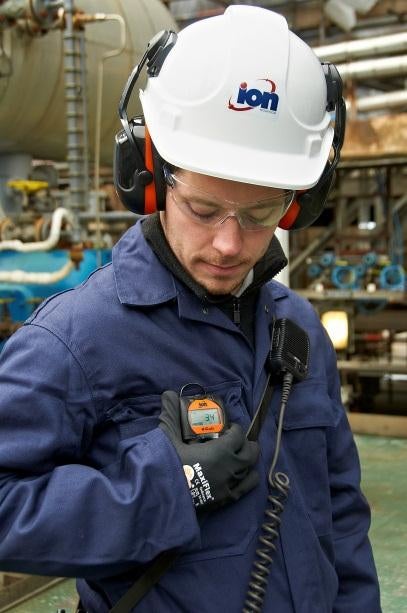
Many chemicals in common use have been identified as extremely hazardous, and represent serious health risks to personnel in the plants where they are manufactured, processed, stored or transported. All such chemicals are governed by clearly defined exposure limits, so an accurate measurement provides an early warning device to the worker when exposed to excessive levels. Data logging and storing information for proof of compliance to the standards used is also essential.
The dangers of exposure
Among the chemicals in industrial use are vinyl chloride, ethylene oxide, styrene, polyols, acrylates and solvents, together with a host of other VOCs and non VOCs such as H2S. Many of these are produced as intermediate products in the manufacture of other chemicals. Vinyl chloride, for example, is produced as the precursor of PVC. Known to cause liver cancer, vinyl chloride must be carefully monitored for ambient concentrations during its manufacture, during its transport and during the manufacture of PVC. Ethylene oxide is another toxic chemical and known carcinogen, used as a sterilisation gas for medical products.
Not all of these compounds represent the same health hazards and not all carcinogenic links have been proven. Thus, depending on the particular chemical, maximum exposure levels might be set at anything from a few hundred parts per million (ppm) to under 10 parts per billion (ppb). The more dangerous these chemicals are, the smaller the concentrations that are permitted for exposure.
Legislation demands the effective monitoring of these compounds in the industrial environment to provide early warnings on any leaks or chemical build-up. This is essential both to protect personnel at the plant and to prevent leakage that could harm the environment and the wider populace.
For plant personnel in particular, it is believed that many cases of ill health are almost certainly due to inhaling toxic vapours. The question, then, is how best to monitor the areas in which people are working to provide the best and most complete picture of the hazards present.
Any location where the chemicals are manufactured, stored or used should be regularly monitored. This can be performed with hand-held instruments, or with fixed-in-place detectors that can send the information directly to a control system. A plant survey might identify possible sources of leaks and emissions that should be monitored with hand-held instruments. Further, the use of hand-held instruments should be used to regularly sweep for ‘hot spots’ or high concentrations.
Personal PID monitors
Monitoring the breathing space of the individual employee to measure the levels of potentially harmful compounds that the individual is exposed to as he or she moves around the plant over the course of the day is best performed using a personal PID monitor.
Prime among these is the new Cub from Ion Science. With its high output 10.6eV lamp, it provides continuous monitoring and alarms for volatile organic compounds, with market leading parts-per-billion (ppb) sensitivity. Providing accurate monitoring of the full range of volatile organic compounds (VOCs), Cub affords the best possible protection for plant personnel, giving early warning of any harmful levels of exposure to hazardous compounds. A version with a 10.0 eV lamp is also available for monitoring Total Aromatic Compounds (TACs), including benzene.
Small, compact and lightweight Cub measures just 61 x 66 x 33 mm and weighs 111g, the smallest, lightest monitor of its kind on the market. Cub is comfortable and unobtrusive to wear, yet is sensitive to over 480 gaseous compounds, with a range of 1 ppb – 5,000 ppm.
Cub provides readings in ppm and mg/m3 on its bright, backlit LCD display, with selectable data logging time. When exposure exceeds pre-set limits – such as the 1 ppm eight hour time weighted average (TWA) for vinyl chloride – Cub provides a number of alarm options, including flashing red LEDs, an audio alarm, vibration, or a combination of the three.
Cub incorporates the same PID technology employed on the leading Ion Science fixed and hand-held VOC detectors. The unique IonPIDTM sensor incorporates both Anti-contamination and Fence Electrode technology for extended operation in challenging, humid and dusty environments.
Ion Science detectors have been independently verified as the best performing PID technology available today, offering fastest, most accurate and most consistent results, with the widest range and market leading sensitivities down to 1 ppb.

